Writing Teaching Resources
Teaching writing strategies and the writing process this school year? Explore a comprehensive collection of teacher resources for elementary and middle school ELA teachers — all created by teachers!
Stocked with graphic organizers, writing prompts, templates, worksheets and so much more, this collection of printable and digital activities is designed to help you as you help your students become more effective communicators and unleash their creativity and imagination.
Save time on lesson planning with resources that have been through a careful review process by an expert member of our teacher team to ensure they're ready for your classroom and your students!
Are you looking for tips and tricks to add to your teacher toolkit this school year? Read on for a primer from our teacher team, including engaging activities for teaching writing in elementary and middle school and a look at some of the different writing strategies your students will need to learn.
11 Writing Strategies Kids Should Know by the End of Middle School
We can't talk about teaching kids to write without talking about the different writing strategies that can help them do just that!
When it comes to teaching our students to become confident writers who articulate their ideas effectively, here are some of the strategies our teacher team prioritizes:
1. Brainstorming
Brainstorming is something we often do in the classroom, and it's a crucial part of learning to generate the ideas that will drive students' writing as they progress through their educational journey. Kids should know how to create a list of potential topics or points related to a particular writing assignment.
With younger students, this is often done as a whole group by writing ideas and points on chart paper. In upper grades, students transition over to using text-based materials to generate ideas and talking points.
2. Outlining
Before diving directly into any assignment, our students should be able to create a structured framework or outline. Teaching students how to create this outline will help them organize their thoughts and arguments for penning their essays, reports and research papers.

3. Using Graphic Organizers
Technically graphic organizers are classroom tools, so you may not think of their use as a writing strategy per se. However, learning to use these tools is another means of providing kids with the tools they need to organize their ideas and information before they sit down to write.
These organizers are particularly useful for expository writing — students can use them to outline main ideas, supporting details, and transitions.
Students can also take advantage of story maps when they are working on narrative writing to plot the key elements of a story, such as characters, setting, conflict, rising action, climax and resolution.
Graphic organizers such as the OREO strategy and hamburger paragraph are also great tools for students to use when working with opinion and persuasive texts.
4. Freewriting
Writer's block is the enemy of creativity, and it can easily frustrate young students who don't know where to begin.
When students freewrite, they write continuously without worrying about grammar or punctuation. This writing strategy can be extremely freeing — hence the name! — and helps frustrated writers move past that writer's block, generating fresh ideas.

5. Peer Editing
Learning to review and provide constructive feedback on each other's work is a great writing strategy to employ in your classroom to help students improve their writing quality and enhance their editing skills.
The strategy allows your students to learn from one another, and it arms them with an important tool they can use well into the future — calling on peers to provide a critical eye to a piece of writing.
6. Using Sensory Language
Working on descriptive writing? With this writing strategy, students engage the reader's senses through vivid and sensory language to create a more immersive experience.
7. Including Transitions and Connectives
As students become more proficient in the writing process, learning to use transitional words and phrases allows them to create smooth transitions between sentences and paragraphs. This strategy makes their writing more coherent and polished.
8. Incorporating Evidence
In persuasive, opinion, and expository writing, students are taught to support their claims with evidence and examples to strengthen their arguments.
It takes some practice to train your students to use evidence in their writing, so it's often a good idea to start with something simple, like the R.A.C.E.S. strategy.
9. Crafting a Thesis Statement
In expository, opinion, and persuasive writing, crafting clear and concise thesis statements that summarize the main point or argument of their essay helps students be more focused and organized in their writing. This strategy can also have the effect of empowering students to express their ideas confidently and persuasively.
10. Incorporating Introductions and Conclusions
With this strategy, students practice crafting effective introductions and conclusions that grab the reader's attention and leave a lasting impression.
11. Following a Revision Checklist
Teaching your students to use a revision checklist is a strategy that will help them be more self-reflective, evaluating their own writing against the checklist criteria and becoming more aware of their strengths and weaknesses.

- Plus Plan
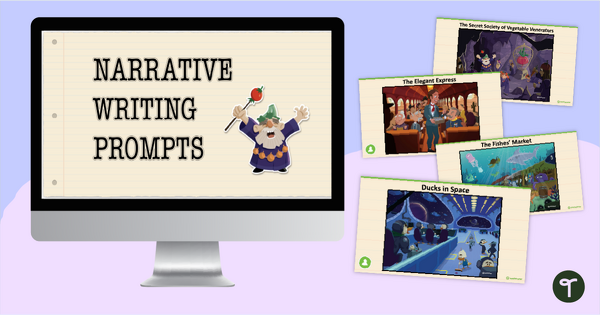
Narrative Writing Visual Prompts
A 19-slide PowerPoint containing a set of 5 visual narrative writing prompts.
- Plus Plan
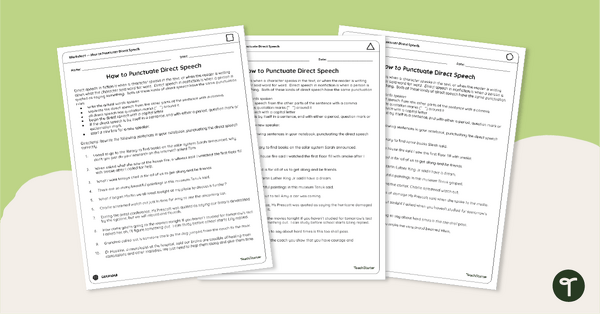
Punctuating Dialogue - Worksheet Pack
Reinforce understanding of how to punctuate direct speech with differentiated quotation marks worksheets.
- Plus Plan
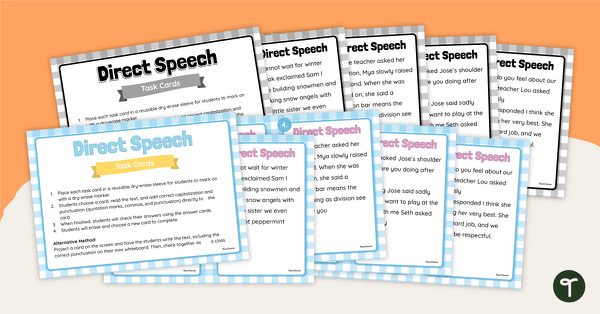
Using Quotation Marks - Task Cards
Practice adding double quotation marks to direct speech with printable quotation mark task cards.
- Plus Plan
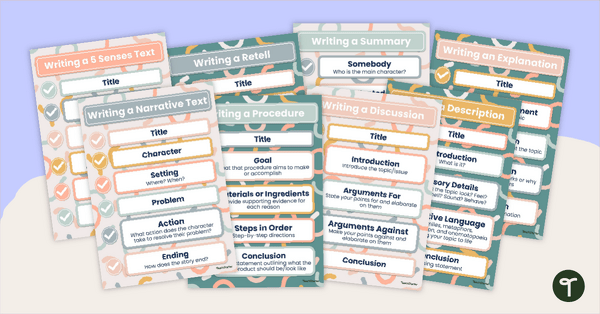
Text Type Structure Poster Display Pack
Display these posters in your room as a visual reminder of the structure of a variety of text types.
- Plus Plan
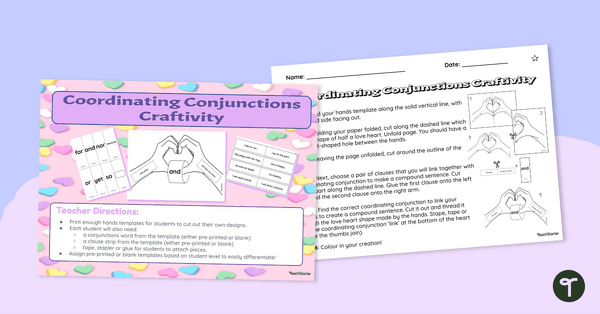
Coordinating Conjunctions Craft and Writing Activity
Encourage your students to get hands on with this highly visual representation of coordinating conjunctions and the role they play in linking two ideas in a sentence.
- Plus Plan
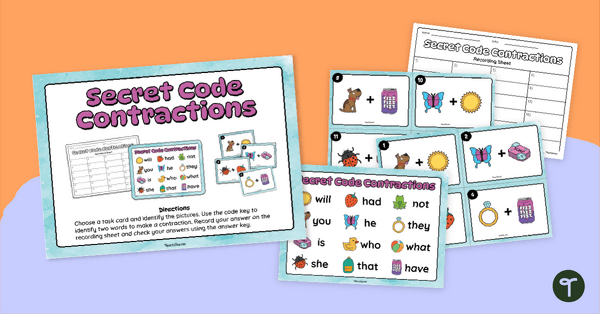
Secret Code Contractions Activity
Explore contractions and decode the secret code with this fun secret code activity.
- Plus Plan
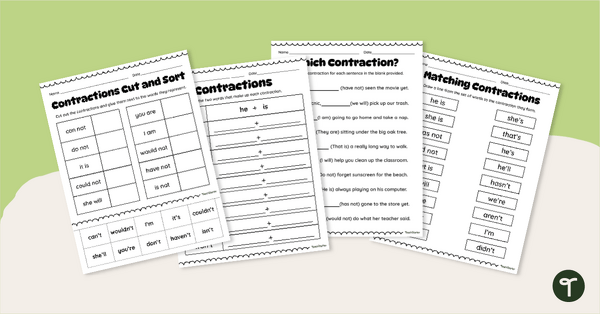
Contraction Worksheets
Help students learn more about contractions with this contraction worksheet pack.
- Free Plan
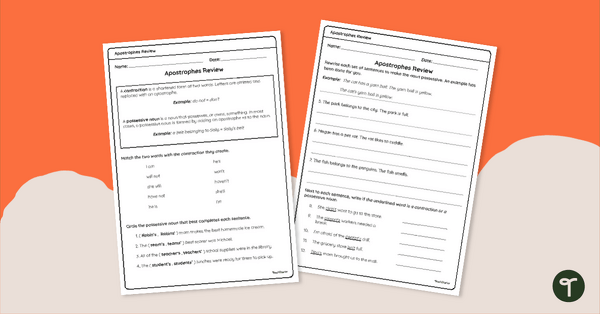
Apostrophe Review Worksheet
Practice using apostrophes with contractions and possessive nouns in this double-sided worksheet.
- Plus Plan
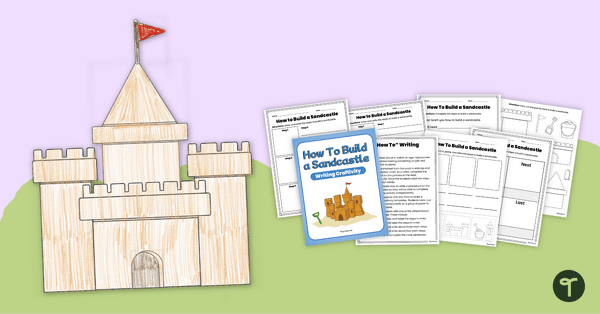
How to Build a Sandcastle – Procedural Writing Craftivity
Use this engaging, hands-on sandcastle craft activity to teach your students all they need to know about procedural writing!
- Plus Plan
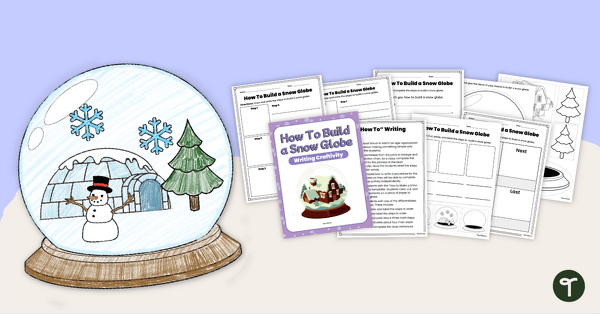
How To Build a Snow Globe – Procedural Writing Craftivity
Use this engaging, hands-on snow globe craftivity to teach your students all they need to know about procedural writing!
- Plus Plan
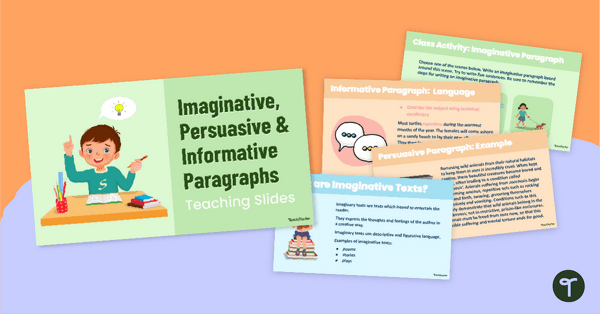
Imaginative, Persuasive and Informative Paragraphs PowerPoint
Learn about the different structures of imaginative, persuasive and informative paragraphs.
- Plus Plan
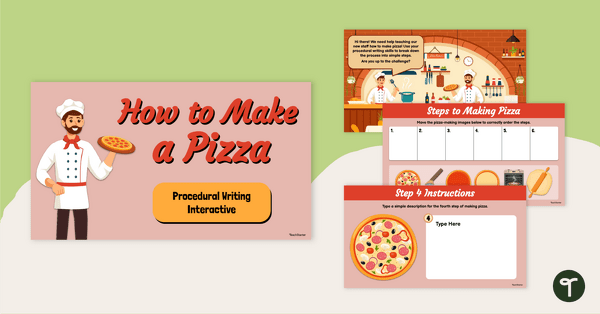
How to Make a Pizza Interactive Activity
Use this “How to Make a Pizza” procedural writing interactive activity to model the purpose, structural elements and language features of procedure texts.
- Plus Plan
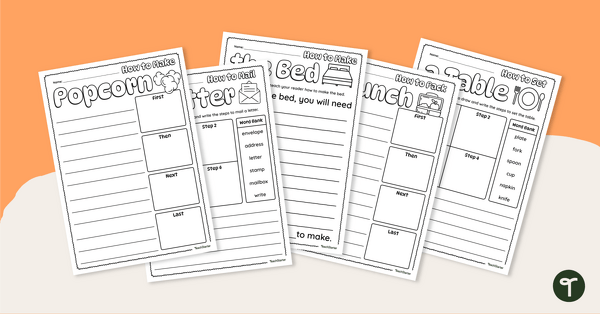
Procedural Writing Templates – "How to" Prompts
Get your students to write procedural texts with this set of differentiated procedure writing prompt templates.
- Plus Plan
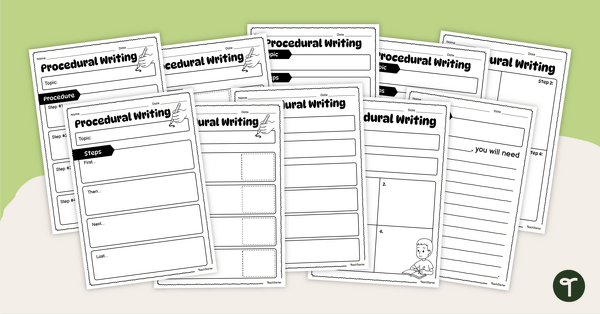
Procedural Writing Graphic Organizers
Get your students to write procedural texts with this set of 10 differentiated graphic organizers.
- Plus Plan
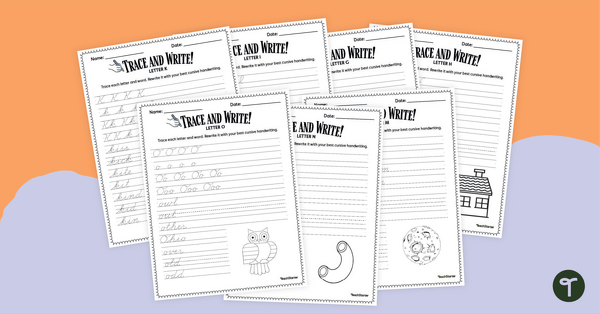
Cursive Writing Worksheets PDF - Alphabet
Practice writing the alphabet in cursive with a pack of printable cursive alphabet worksheets.
- Plus Plan
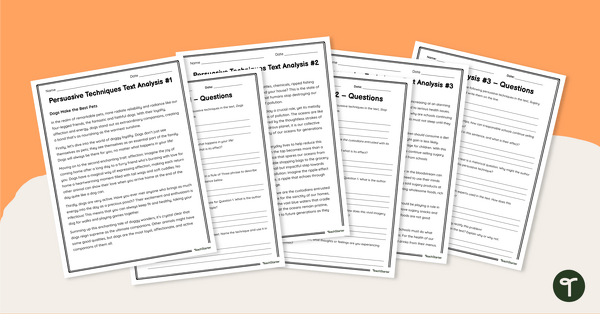
Analyzing Persuasive Techniques Worksheets
Get students analyzing persuasive techniques and their effects on audiences with this set of three texts with accompanying questions.
- Plus Plan
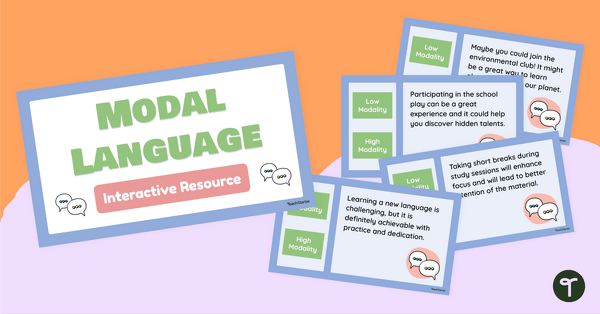
Modal Language Interactive Activity
Explore the language of modality with your students using this digital game perfect for your persuasive writing lessons.
- Plus Plan
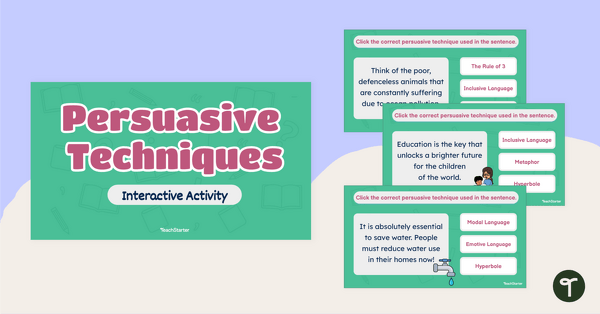
Persuasive Techniques Interactive Activity
Explore persuasive technique examples with your students using this digital game perfect for your persuasive writing lessons.
- Plus Plan

List of Rhetorical Devices
Download this list of rhetorical devices for your students to refer to when writing a persuasive essay.
- Plus Plan
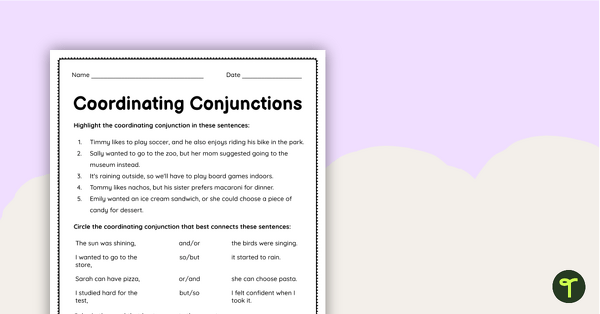
Coordinating Conjunctions Worksheet
Distribute this coordinating conjunctions worksheet to help your students practice joining clauses with conjunctions to form compound sentences.
- Plus Plan
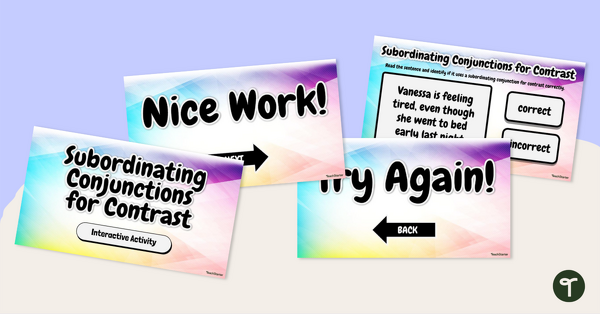
Subordinating Conjunctions for Contrast Interactive Activity
Assign this multiple choice subordinating conjunctions for contrast interactive activity for your students to correctly identify this type of conjunction in given sentences.
- Plus Plan
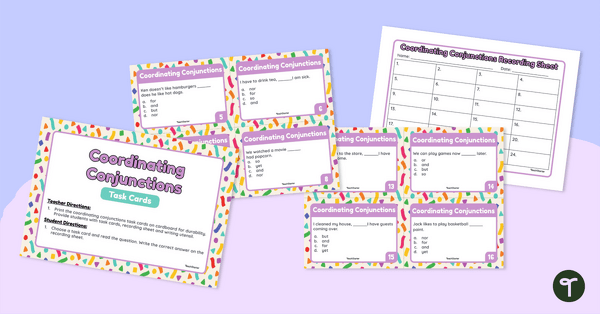
Coordinating Conjunctions Task Cards
Use this set of 24 task cards to reinforce students' understanding of coordinating conjunctions and building compound sentences.
- Plus Plan

Writing Compound Sentences Worksheet
Spark students' creativity with this conjunctions worksheet containing four images to prompt students to write compound sentences.
- Plus Plan
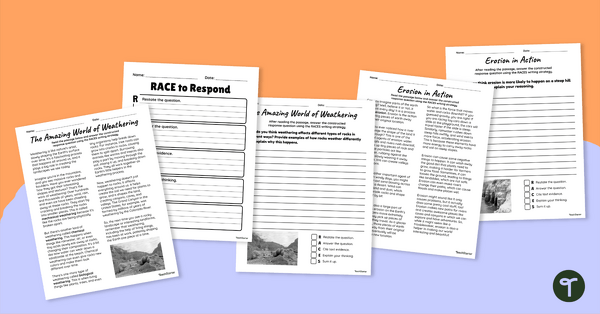
Weathering and Erosion – RACES Writing Strategy Worksheets
Combine reading, writing and science with two worksheets about weathering and erosion using the RACES writing strategy for text evidence.
- Plus Plan
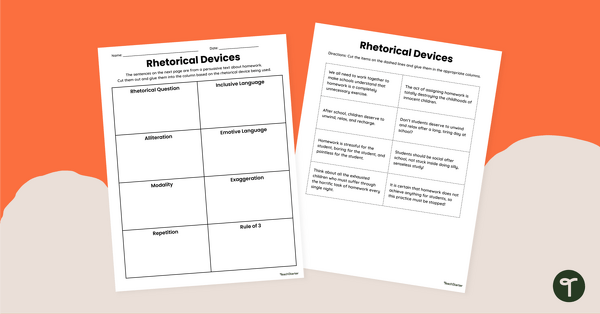
Rhetorical Device Examples – Cut and Paste Worksheet
Match the persuasive writing techniques with the correct examples using this simple cut-and-paste worksheet perfect for your persuasive writing unit.
- Plus Plan
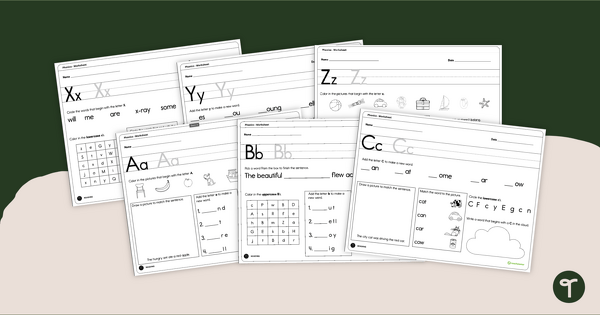
Letters A–Z Printable ABC Worksheets
Learn the letters of the alphabet and their sounds with printable ABC worksheets
- Plus Plan
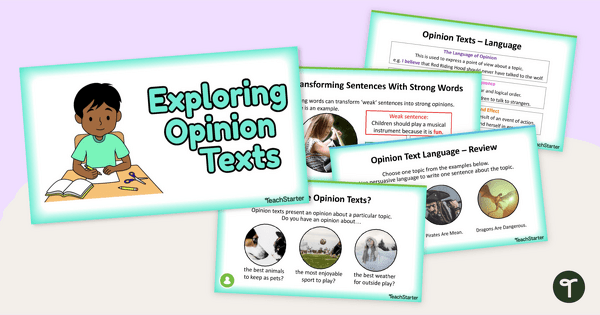
Exploring Opinion Texts Teaching Slides - Grade 1 and Grade 2
A 35 slide editable PowerPoint template to use when teaching your students about the structure and language features of opinion pieces.
- Plus Plan
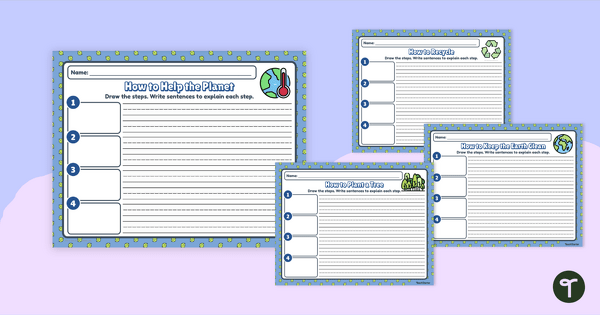
Recycling Writing Prompts - Primary
Show off your procedural writing skills with a pack of recycling writing prompts.
- Plus Plan
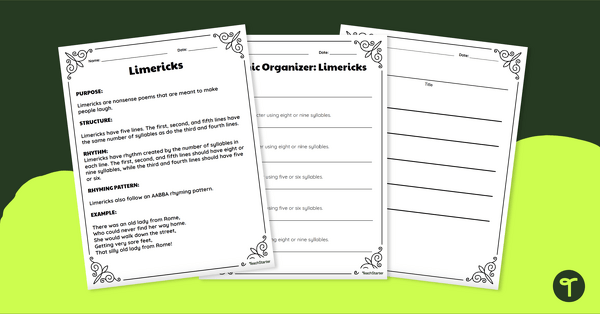
How to Write a Limerick - Worksheet Pack
Use this 2-page worksheet when teaching students how to write a limerick.
- Plus Plan
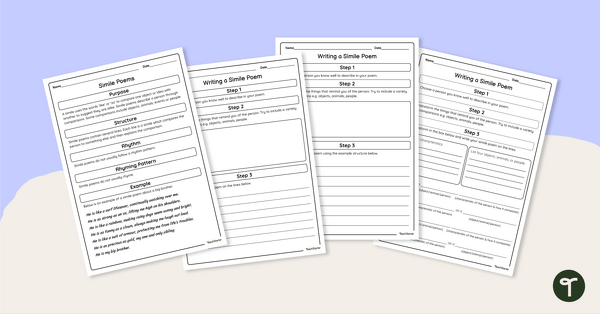
Writing a Simile Poem - Worksheet
Experiment with similes by writing a simile poem about a special person.
- Plus Plan
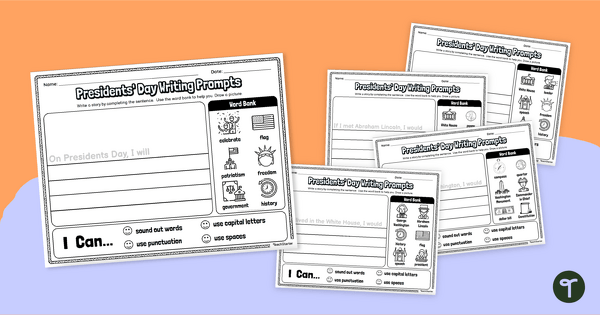
Presidents' Day Writing Prompts
Celebrate Presidents’ Day and your growing writers with writing worksheets for Kindergarten and first grade.
- Plus Plan
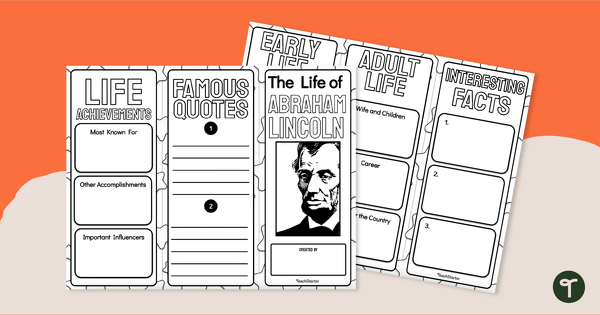
Abraham Lincoln Brochure Project
Demonstrate learning about the Abraham Lincoln’s contributions to America with a brochure project.